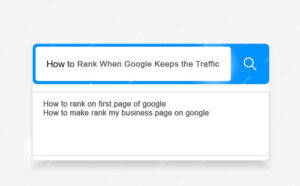Introduction to Content Calendars
A content calendar is an essential tool for any serious blogger. It serves as a strategic framework that outlines what content will be published, and when. By planning your content in advance, you can ensure a steady flow of engaging posts, maintain consistency, and ultimately drive more traffic to your blog. This comprehensive guide will delve into the intricacies of creating a successful content calendar, equipping you with the knowledge to elevate your blogging strategy.
Understanding the Importance of a Content Calendar
A content calendar is more than just a schedule; it’s a blueprint for your blog’s success. It helps you stay organized, reduces last-minute stress, and ensures that your content aligns with your overarching goals. Moreover, a well-structured calendar allows you to maintain a balance between various content types, cater to different audience segments, and keep your blog fresh and relevant.
Assessing Your Content Needs
Analyzing Audience Demographics
Before you can start planning your content, it’s crucial to understand your audience. Analyzing demographics such as age, gender, location, and interests will provide valuable insights into what type of content resonates with them. Use tools like Google Analytics and social media insights to gather this data, ensuring your content strategy is tailored to your readers’ preferences.
Evaluating Content Gaps
Identifying gaps in your current content is another key step. Conduct a content audit to see what topics have been covered extensively and which areas need more attention. This will help you focus on creating content that fills these gaps, providing a more comprehensive resource for your audience.
Setting Clear Goals and Objectives
Every successful content calendar starts with clear goals and objectives. Whether you’re aiming to increase website traffic, boost engagement, or grow your email list, having specific, measurable goals will guide your content creation process. Outline these objectives at the beginning of your calendar to keep your efforts aligned with your desired outcomes.
Choosing the Right Tools
Digital Tools and Software
The right tools can make creating and managing your content calendar a breeze. Digital tools like Trello, Asana, and CoSchedule offer customizable templates, collaboration features, and integration with other platforms. These tools allow you to plan, schedule, and track your content seamlessly, ensuring everyone on your team stays on the same page.
Traditional Methods
While digital tools are highly efficient, traditional methods like physical planners or whiteboards can also be effective. These methods offer a tangible way to visualize your content schedule and can be particularly useful in smaller teams or solo operations. Choose the method that best fits your workflow and preferences.
Structuring Your Content Calendar
Weekly Planning
Breaking down your content calendar into weekly segments allows for detailed planning and flexibility. Determine specific days for different types of content, such as blog posts, social media updates, and newsletters. This approach ensures a steady stream of content without overwhelming your audience.
Monthly Themes
Organizing your content around monthly themes can provide a cohesive narrative and make planning easier. Choose themes that align with your brand and audience interests, allowing you to explore topics in-depth and create a series of related posts that keep readers engaged throughout the month.
Brainstorming Content Ideas
Seasonal and Evergreen Content
Balancing seasonal and evergreen content is crucial for maintaining relevance and longevity. Seasonal content capitalizes on current events, holidays, and trends, while evergreen content remains valuable over time. By incorporating both, you ensure a mix of timely and lasting content that attracts and retains readers.
Industry Trends and News
Staying abreast of industry trends and news is vital for creating timely and authoritative content. Subscribe to industry newsletters, follow thought leaders, and participate in relevant forums to keep your finger on the pulse. This knowledge will help you generate content ideas that are both current and insightful.
Assigning Responsibilities
Collaborating with Team Members
If you have a team, clearly defining roles and responsibilities is essential. Assign tasks such as writing, editing, and social media management to specific team members, ensuring everyone knows their duties and deadlines. Effective collaboration enhances productivity and maintains content quality.
Utilizing Freelancers and Guest Bloggers
Incorporating freelancers and guest bloggers can add diversity and expertise to your content. These contributors bring fresh perspectives and can cover topics outside your immediate knowledge base. Establish clear guidelines and maintain open communication to ensure their contributions align with your content strategy.
Creating a Posting Schedule
Frequency of Posts
Deciding how often to post is a balancing act. Too frequent, and you risk overwhelming your audience; too sparse, and you may lose their interest. Analyze your audience engagement metrics to determine the optimal posting frequency, aiming for consistency that keeps readers coming back for more.
Optimal Posting Times
Timing can significantly impact the reach and engagement of your posts. Use analytics tools to identify when your audience is most active, and schedule your content to go live during these peak times. This strategy maximizes visibility and boosts interaction with your content.
You would like to read: Content Marketing Mistakes And How To Avoid Them
Developing a Content Creation Workflow
Ideation to Publication
A streamlined workflow from ideation to publication ensures efficiency and quality. Start with brainstorming sessions to generate ideas, followed by drafting, editing, and proofreading. Use a content management system (CMS) to organize and schedule your posts, keeping the entire process cohesive and on track.
Quality Control Measures
Maintaining high standards is paramount. Implement quality control measures such as peer reviews, fact-checking, and grammar checks to ensure your content is accurate, polished, and professional. This attention to detail builds trust and credibility with your audience.
Tracking and Analyzing Performance
Key Performance Indicators (KPIs)
Measuring the success of your content requires tracking key performance indicators (KPIs). Metrics such as page views, time on page, social shares, and conversion rates provide insights into how well your content is performing. Regularly review these KPIs to gauge the effectiveness of your strategy.
Using Analytics Tools
Leverage analytics tools like Google Analytics, SEMrush, and social media insights to gather data on your content’s performance. These tools offer detailed reports and visualizations, helping you understand what works and what needs improvement. Use this data to refine your approach and achieve better results.
You would like to read: Mastering The Art Of Content Planning
Adjusting and Refining Your Strategy
Responding to Feedback
Feedback from your audience is invaluable. Encourage comments, surveys, and direct messages to gather insights into their preferences and pain points. Use this feedback to adjust your content strategy, ensuring it remains relevant and engaging.
Iterative Improvements
Content strategy is not static; it requires ongoing refinement. Regularly review your content calendar, analyze performance data, and make iterative improvements. This proactive approach allows you to stay ahead of trends, adapt to changes, and continuously enhance the quality and impact of your blog.
In conclusion, a well-crafted content calendar is the cornerstone of a successful blog. By following these detailed steps, you can create a robust calendar that not only keeps you organized but also drives sustained growth and engagement. Happy blogging!










